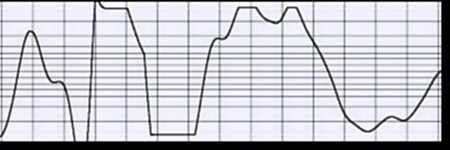Direct mp3 download or play: New Year’s 2016 – Seattle
New Year’s 2016 Seattle
This was recorded at my home in Seattle from about 11:55 PM, December 31st, 2015 to about 12:15 AM, January 1st, 2016. Sorry about the distortion. I guess I recorded a little hot or a VST plugin was set incorrectly. Some of the explosions seem to be quite clear, but others have a “crackle” sound. The square waveform is plainly visible and clip repair only lowers the amplitude of the clipped audio and it remains distorted.
Direct mp3 download or play: New Year’s 2016 – New York
New Year’s 2016 New York
This was captured from an online open microphone from approximately 11:58 PM, December 31st, 2015 to about 12:08 AM, Eastern Standard Time, January 1st, 2016.
Direct mp3 download or play: New Year’s 2016 – Chicago
New Year’s 2016 Chicago
This was captured from an online open microphone from approximately 11:58 PM, December 31st, 2015 to about 12:08 AM, Central Standard Time, January 1st, 2016.












5 users commented on " New Year’s 2016 "
Follow-up comment rss or Leave a TrackbackWel now, that’s quite interesting. I haven’t looked at this blog in a few years. Today, for a lark, I decided to see what’s new, and there’s a post of New Year’s Eve ambients, including audio from an open mic in New York. Being from New York, and having an open streaming mic here, I was curious to see if anyone else around here was doing something similar, only to find that your clip came from my mics. As a fan, I’m honored to find that here, even by accident. As a generally curious person, I’m slightly disappointed that it wasn’t someone else’s perspective. I enjoy finding things like that around the web. Since I’m completely blind, these online open mics are just as good as a live webcam to me, especially with decent stereo audio for accurate positioning.
The setup I use for my stream, in case you or anyone else wants to know, is a pair of cheap Behringer XM8500 dynamic mics on a stereo bar in a configuration that somewhat resembles X/Y, a Behringer UMC-204 audio interface, a DBX Project One compressor, streaming via a Raspberry Pi 2 micro computer. The Pi has an external hard drive connected, which is always recording audio in a lossless format, just in case something interesting happens. Though condensers are generally better for this sort of thing, I like the fact that I can leave these dynamic mics out in the open, and they really don’t care much. I’ve had one set of these XM8500’s nearly completely exposed to the elements for just over six years back at my parents’ place in North Carolina, also providing a stream, and they still sound as good as new.
Borris,
What is you site URL for the live streaming mics? Would love to check them out!
Greetings from Canada!
-Listener
Hello (don’t say),
I’ve searched a bit online and can’t find any live streaming mics…would you be so kind as to list some of the Web addresses?
Weather on, Weatherman!
borris, I think I’m listening to one of your streams right now, from North Carolina on Locus Sonus Soundmap. I apologize for not responding sooner. Very good quality, by the way. I thought I heard a train locomotive and an air conditioner motor switch on and off, along with distant traffic noise. When I listen to ambience, I often do additional audio processing. I’ve learned how to feed any computer audio through a VST host. The sound can be affected in real time. In some cases this can (in my opinion) dramatically improve the listening experience. For example filtering 50 or 60 hertz hum out or maybe boosting the level 10 or 15 dB on a quiet morning. Suffolk Coast – Walberswick on Locus Sonus Soundmap, for example is very clear, but has a slight 50 hertz hum and a slight 100 hertz harmonic at the time I’m posting this comment.
One more thought, concerning inexpensive condenser microphone capsules, that run on low voltage “plug-in” power. They can be converted to operate on regular 48 volt “phantom power” with this customizable, custom made adapter available from Naiant Studio. – http://naiant.com/studio-electronics-products/inline-devices/pfa-phantom-power-adaptor/
This allows for any cheap condenser mic. capsule to work with any (balanced XLR) microphone input that supplies normal 48 volt power and I think it improves the sound quality of these microphones.
In addition, if one gets ruined, it’s not such great loss, as they can be had for less than a couple of dollars. Even less if purchased in bulk.
Thank you, Weatherman! That soundmap is very interesting. Makes me want to put up my own live mic stream – I’ll have to get to work on it and add it to the list one day soon. Hoping you’ll get one going as well!